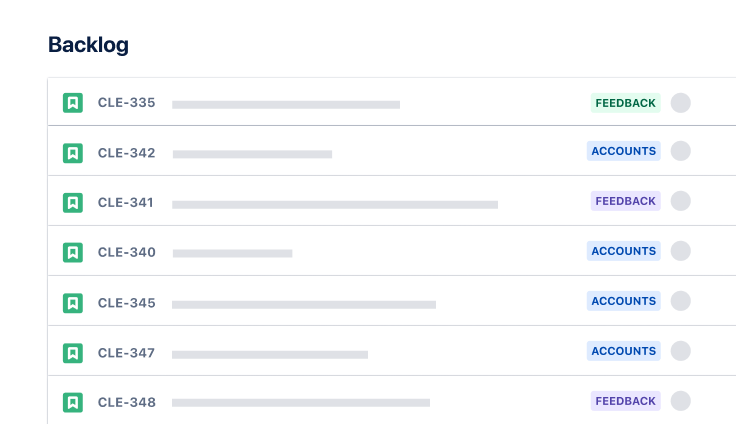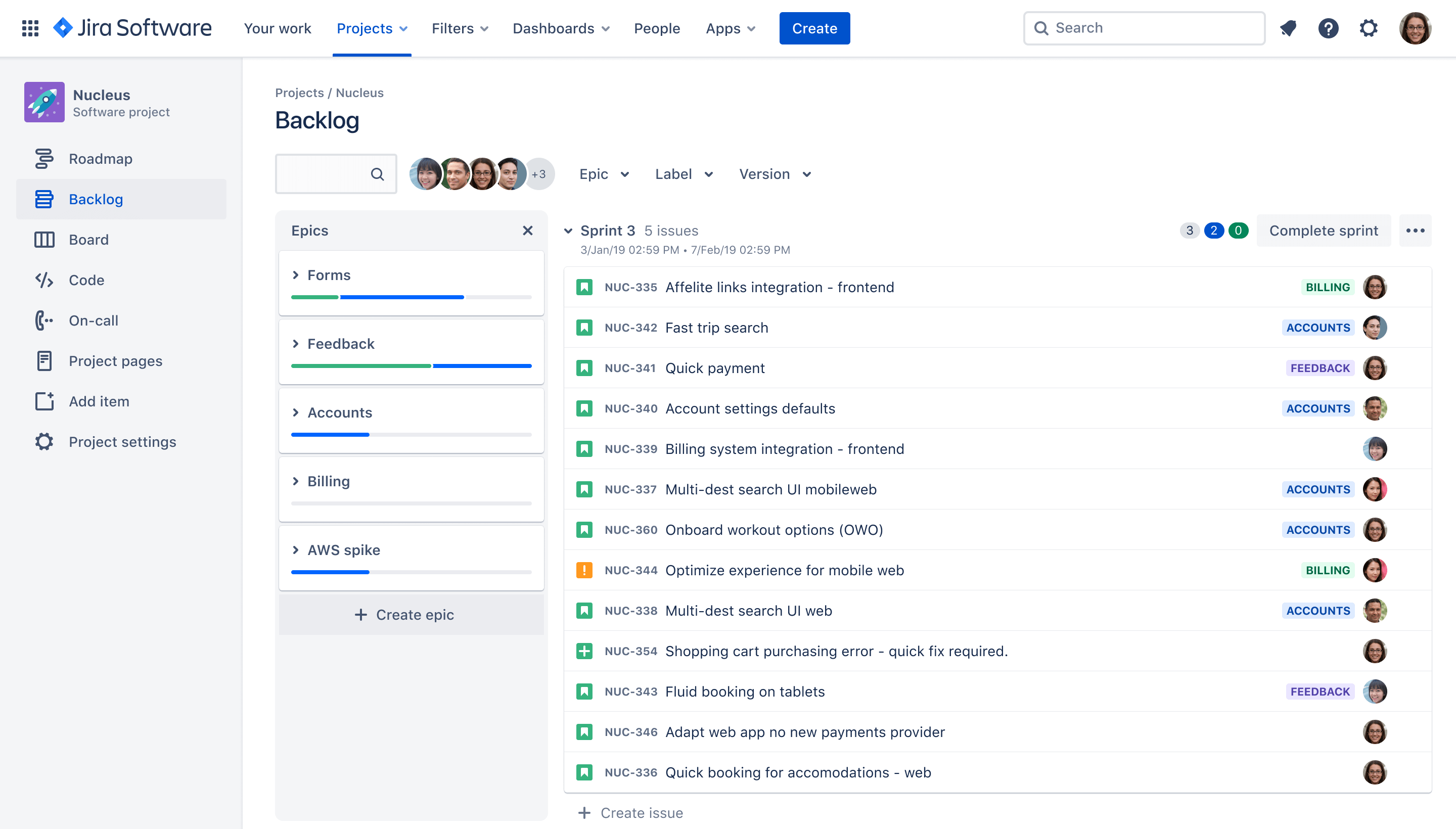
Scrum backlog template
The Scrum backlog template helps Agile teams organize and prioritize tasks, improving time estimates and enhancing understanding of dependencies and blockers.
가장 적합한 팀
프로젝트 관리
소프트웨어 개발
주요 기능
작업 계획
우선 순위 지정
파이프라인 관리
What is a scrum backlog template?
Improved organization
The scrum backlog template in Jira Software provides agile teams with a systematic and reusable approach for organizing the overall project and the focused work in each sprint. It helps capture all necessary features and supporting information, such as user stories and requirements, in a consistent, structured, and centralized manner.
Prioritized list of tasks
Prioritizing and estimating tasks is simple with the Scrum backlog template. Agile teams can quickly move high-priority tasks to the top, identify dependencies, and spot potential roadblocks. Reprioritization is simple, and dependencies automatically move to provide a clear picture of the work.
스크럼 백로그 템플릿에는 무엇이 포함됩니까?
제품 백로그
The scrum product backlog template includes all the work for a project, including product backlogs and sprints. Projects often have multiple product backlogs for different focus areas, such as new features, user experience, or product optimization. Teams identify and prioritize tasks within each product backlog. The work begins once they incorporate them into Scrum sprints.
Teams can include relevant information, such as specifications, user stories, and value. Prioritize items on the product backlogs based on business value and project goals. This allows teams to achieve greater efficiency when creating the sprint backlog, also known as an iteration.
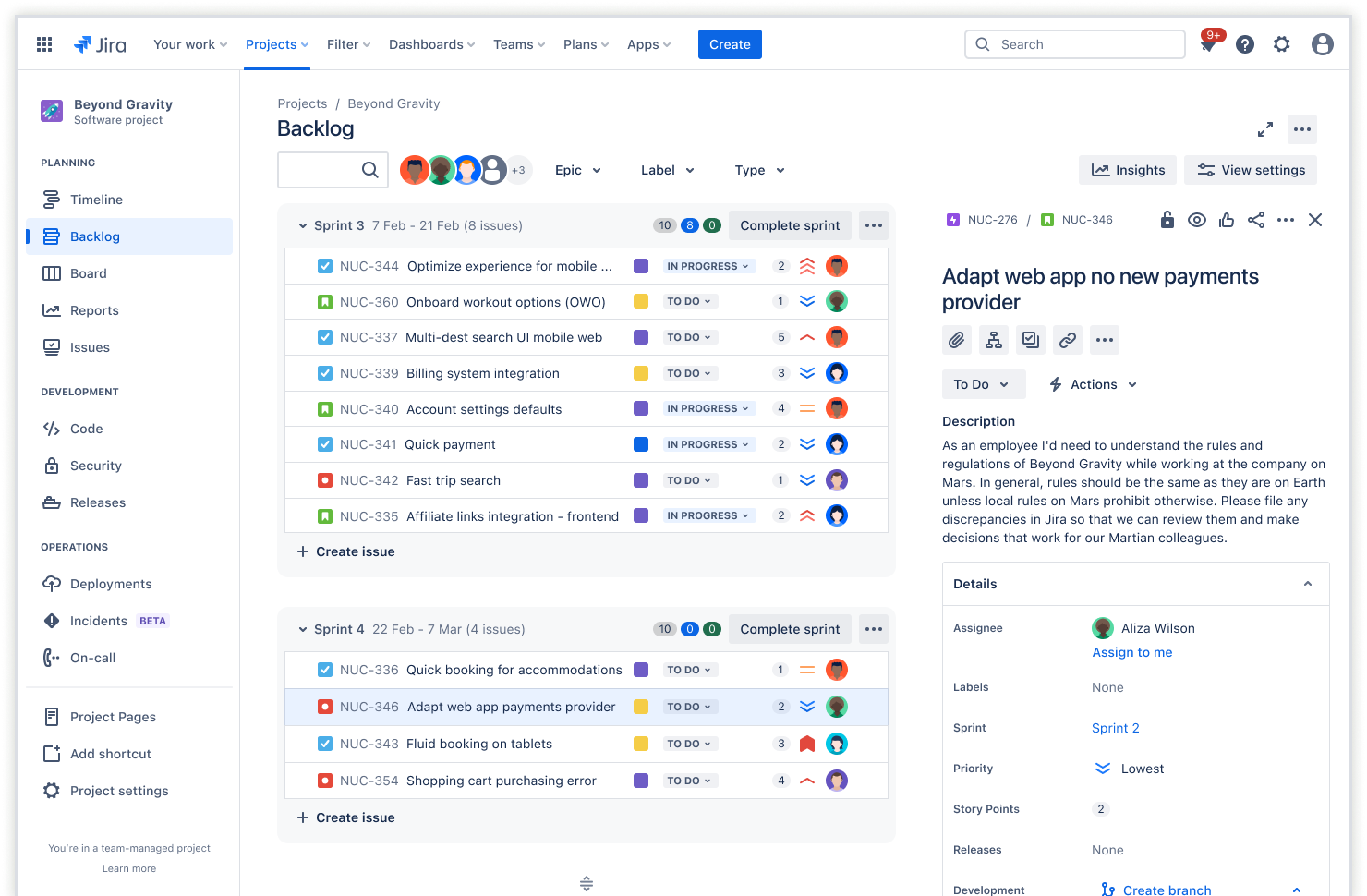
스프린트 백로그
Sprints are focused sets of tasks that deliver an incremental result. Many teams also identify sprints with milestones. The scrum sprint backlog template includes sprint planning.
스프린트 백로그는 제품 백로그의 하위 집합이며 팀에서 진행 중이거나 곧 작업할 계획인 작업으로 구성되어 있습니다. 스프린트를 작은 작업으로 나누면 팀이 스프린트를 더 빠르게 완료하고 잠재적 블로커를 파악할 수 있습니다.
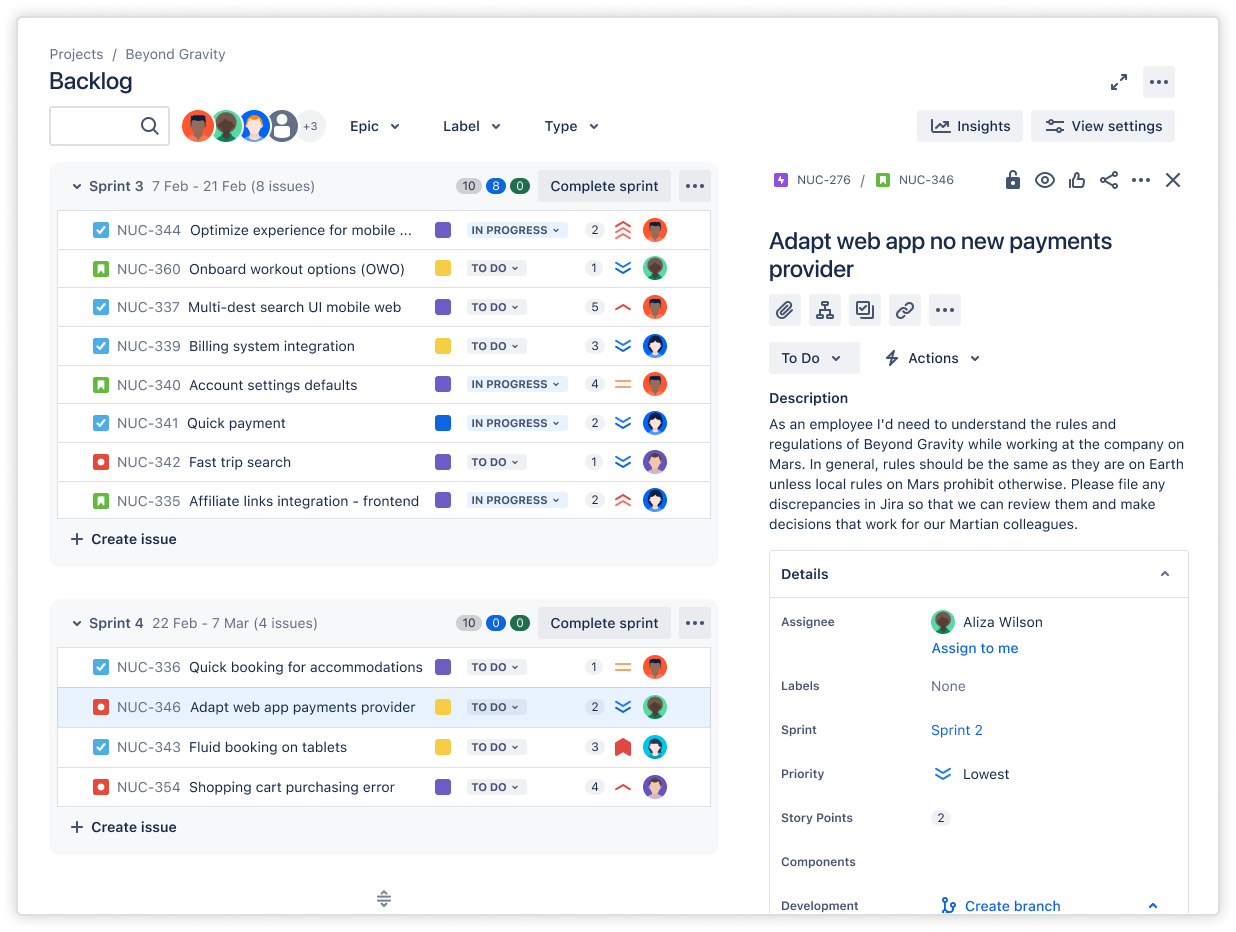
타임라인 보기
타임라인 보기는 팀 및 이해 관계자가 예정된 마감 날짜와 관련 작업의 진행률을 지속적으로 파악할 수 있게 도와줍니다. 에픽을 추가하고 작업 항목을 매핑하면 종속성에 대해 파악하고 작업이 어떻게 작용하는지 명확하게 이해할 수 있습니다. 중앙 집중식 대화형 보기를 통해 충돌, 중복 작업, 리소스 제약 및 기타 잠재적 장애물을 더욱 쉽게 확인할 수 있습니다.
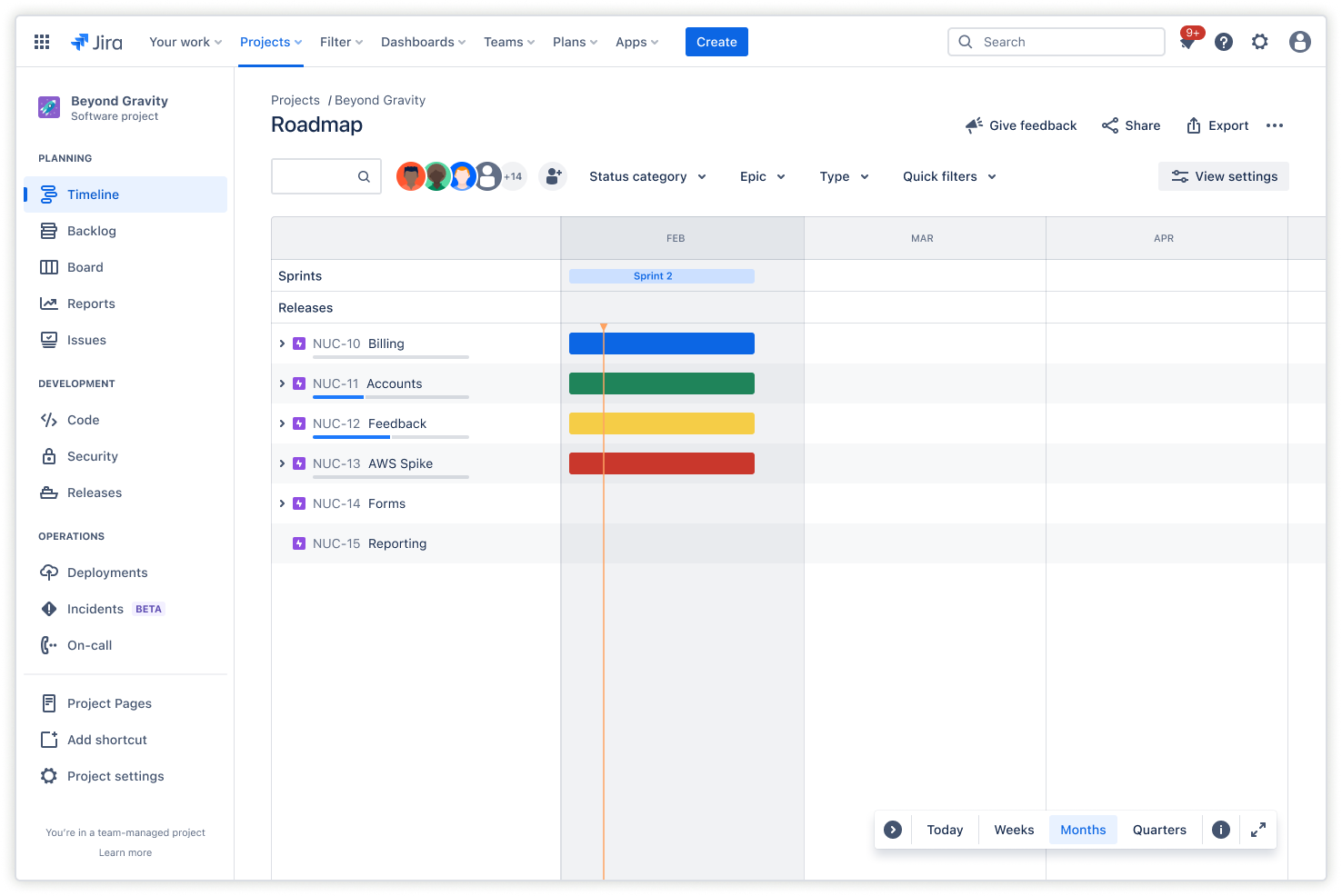
스크럼 보드
Scrum boards transform tasks into manageable visual representations of the entire project. A visual presentation helps Agile teams recognize large, complex depictions of work and break them down into smaller, more manageable tasks. This helps eliminate surprises, keeps the team focused on the sprint, and ultimately ship faster.
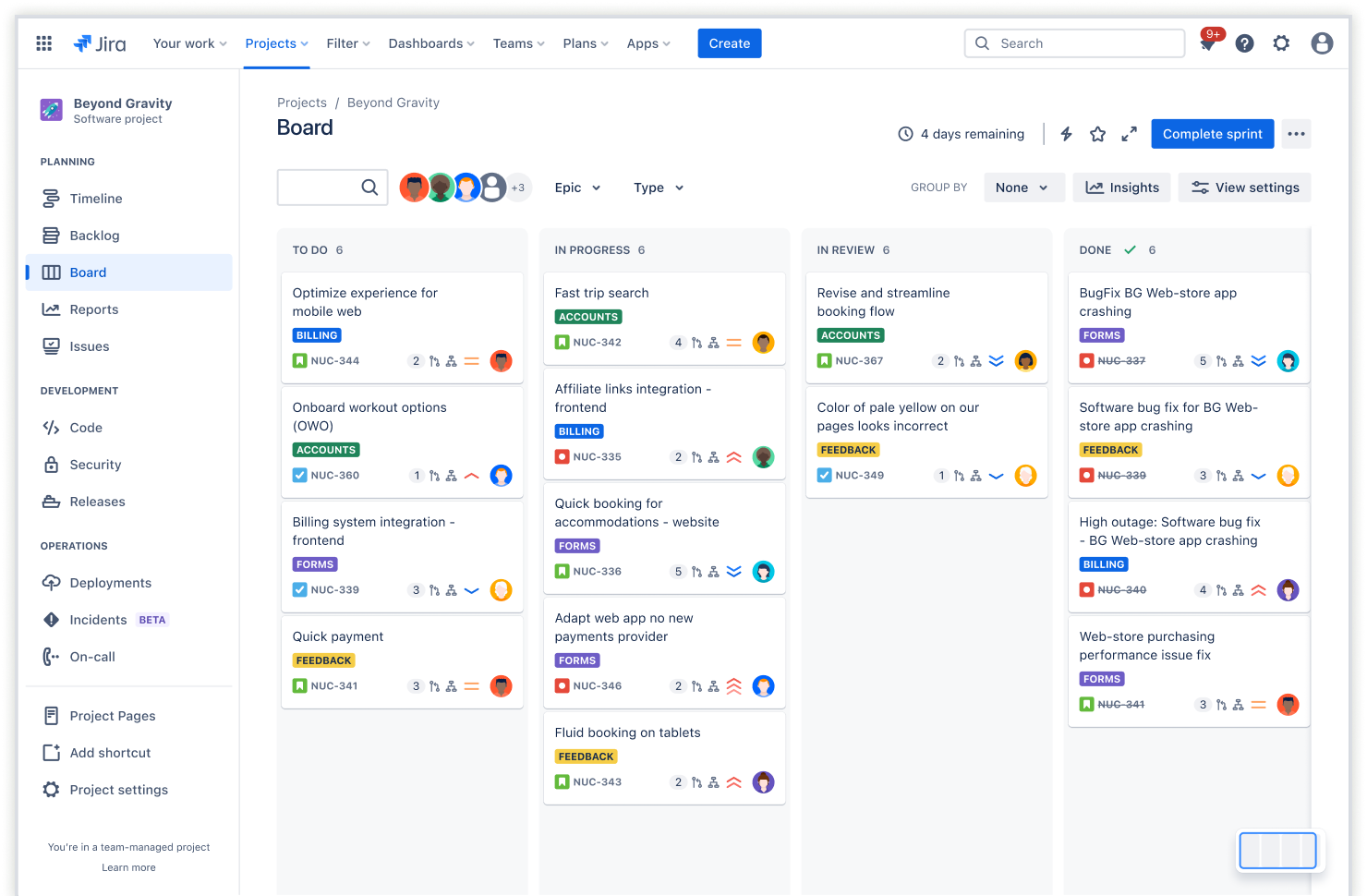
스크럼 백로그 템플릿을 시작하는 방법
이 템플릿은 Jira를 사용하여 스프린트 전반에서 팀의 속도를 높여줍니다.
